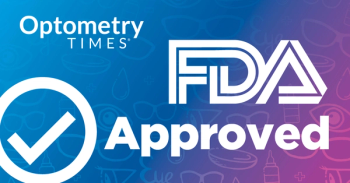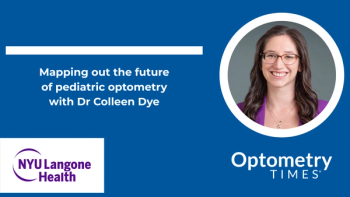
New TFOS DEWS III Digest Report highlights relevant research on management, treatment of DED
The report categorizes research into 7 categories: sex, gender, and hormones; epidemiology; pathophysiology; tear film; pain and sensation; iatrogenic; and clinical trial design.
The Tear Film and Ocular Surface Society (TFOS) DEWS III Digest Report, published in June 2025 in American Journal of Ophthalmology, has identified key research published since the 2017 TFOS DEWS II Workshop reports in the form of sex, gender, and hormones; epidemiology; pathophysiology; tear film; pain and sensation; iatrogenic; and clinical trial design.1 The report was compiled in an effort to support evidence cited in the TFOS DEWS III Diagnostic Methodology and Management and Therapy reports, and included input from 80 experts in 18 countries, according to TFOS.2
Study authors, led by Fiona Stapleton, PhD, MSc, of the School of Optometry and Vision Science, UNSW Sydney in NSW, Australia, outlined advancements in tear film research, a clarification of pathophysiological distinctions between aqueous deficient dry eye (ADDE) and evaporative dry eye (EDE), and ocular pain perception, among others.1
For sex, gender, and hormones, study authors focused on studies published after July 1, 2017, and cited significant sex-related differences in the lacrimal gland, meibomian gland, cornea, eye lid blinking, corneal thickness, sensitivity, re-epithelization, pain assessment, hormonal regulation of the ocular surface and adnexa, and dry eye disease (DED)-induced damage, among others.1
“There have been significant research advances linking sex, hormones, and gender to DED. Aging, cancer, and hormone therapy increasingly broaden the interdisciplinarity in this field over time,” the report authors stated. “Despite the significant impact of gender-affirming hormone therapy on the entire endocrine system and its effects on physical and mental health, there is limited information on its impact on ocular health. Variations in age, health profile, gender-affirming hormone therapy [adherence], and barriers to accessing regular health care limit the documentation of [adverse] effects. Clinicians and future research should consider these variations, as recommended in a recent systematic review on the medical aspects of the transgender and gender diverse population.”
For epidemiology, DED was found to increase with age and was more common in women than men; signs and symptoms were more common in women with higher rates in younger and older adults. Some of the outstanding questions that remain from the research are issues concerning disease severity, geographic considerations, the generalizability of prevalence measures for DED in children and adults under 40 years of age, and a need for appropriately powered studies to determine risk factors in patients under 40. Researchers noted that a limited number of studies exist that explore the prevalence, risk factors, or natural history by disease severity.1
Opportunities for future research concerning tear film were identified in the needed exploration of the relationship between disordered lipids that result in spreading and increased elasticity as compared to ordered lipids that lead to improved resistance to evaporation. Researchers also called for a more detailed understanding of whether tear biomarkers can be used to differentiate subtypes of DED and referenced the society’s recent Diagnostic Methodology report.1
“Analyses of microbiome changes across individuals of different ethnicities and countries of residence may provide further insights into its potential role in DED pathogenesis or as a marker for the disease,” the study authors noted. “Understanding the potential role of different microRNAs in DED pathogenesis, DED subtype or as biomarkers could be a highly promising area for future investigation.”
Recommendations for DED management were also suggested by the study authors under iatrogenic, particularly regarding DED implicated in a variety of antiglaucoma topical drugs, preservatives and excipients, antibiotics, and hormone replacement therapy, among others.1
“The first step is to investigate which medication is causing DED and try to stop its use. This subtraction can be challenging when discontinuing the treatment, which presents a risk to the eye's health,” the study authors noted. “Sometimes, multiple drugs and components are involved, or adverse effects appear long after treatment initiation, making identification of which is causing DED even more difficult.”
References:
Stapleton F, Argüeso P, Asbell P, et al. TFOS DEWS III Digest Report. Am Journ of Opthalmol. 2025.
https://doi.org/10.1016/j.ajo.2025.05.040 TFOS dry eye workshop (DEWS) III: completed! Tear Film and Ocular Surface Society. News release. June 10, 2025. Accessed June 18, 2025.
https://www.tearfilm.org/dettnews-tfos_dry_eye_workshop_dews_iii_completed/7450_16/eng/
Newsletter
Want more insights like this? Subscribe to Optometry Times and get clinical pearls and practice tips delivered straight to your inbox.



















































.png)


